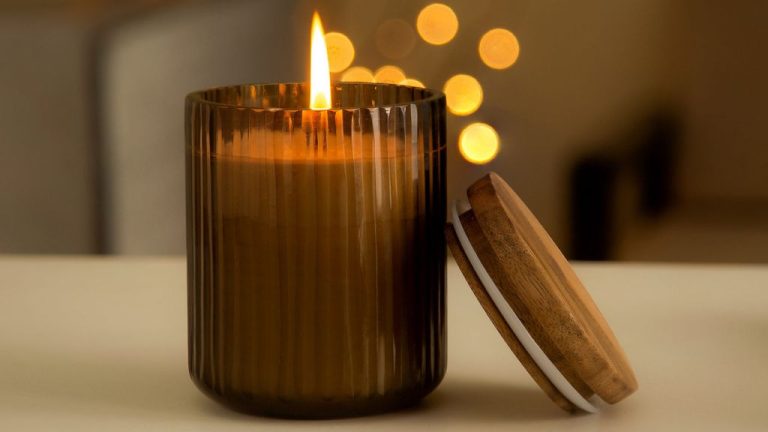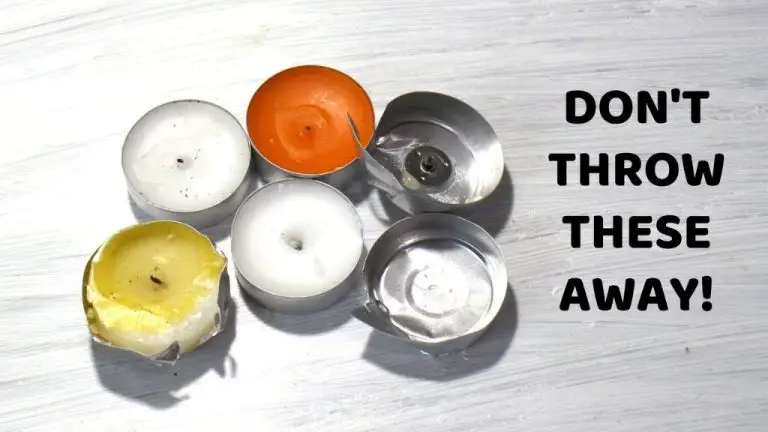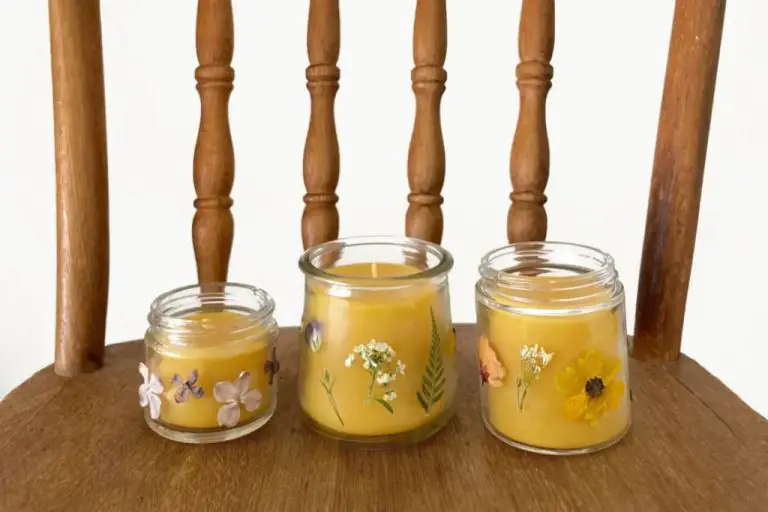What Can Be Used As Candle Wick?
Candle wicks have been essential to candle making since ancient times. The wick serves as the fuel delivery system that allows the candle wax to be drawn up into the flame. Different materials make better or worse wick choices depending on factors like burn rate, sustainability, and smoke production.
Ancient Egyptians used fibrous reeds and papyrus as some of the earliest candle wicks. Later, materials like string, rope, and twine were woven loosely to create wicks. Over centuries of candle making, wick materials have continued to evolve. Today, common wick choices range from natural fibers like cotton to innovative options like paper and wood.
The material used for the wick impacts the candle’s burning properties. Choosing the optimal wick helps provide an even burn, cleaner scent, and longer burn time. Understanding the nuances of wick materials allows crafters to select the best option for their specific candle type, fragrance, and purpose.
Cotton
Cotton is the most common material used for candle wicks. Cotton wicks are made from braided or twisted strands of cotton fiber (WASTE COOKING OIL.docx – CANDLES MADE FROM …. The braiding helps the wick burn evenly and prevents “tunneling,” where the flame burns a hole down the center of the wick. Cotton offers several benefits:
– It’s affordable and widely available.
– It burns cleanly without producing excess smoke or soot.
– The braided structure provides strength and stability.
However, there are some downsides to cotton wicks:
– They require regular trimming to prevent mushrooming at the tip.
– The flame can occasionally flicker or bend in breezes.
– They may burn faster than other natural fiber wicks.
Overall, cotton makes an excellent all-purpose wick for a variety of candles when braided tightly. It strikes a good balance between affordability, clean burning, and easy maintenance.
Wooden Wicks
Wooden wicks are made from wood grains or fibers compressed together to form the wick (https://northwoodcandlesupply.com/products/wood-candle-wick). As the wood burns, it makes an audible crackling or popping sound. This can create a pleasant ambiance while the candle is lit.

Some benefits of wooden wicks are that they tend to burn cleaner and more efficiently than cotton due to their density. The crackling sound also helps spread fragrance from scented candles. However, wooden wicks also have some downsides. They can be prone to clogging from wax or soot buildup, and may need to be trimmed more frequently. Wooden wicks also don’t bend as easily as cotton, so they may not work as well in taper candles or shapes other than cylinders (https://candle-shack.com/collections/wooden-wicks).
Overall, wooden wicks can add visual and auditory interest to a candle, but may require more maintenance. Candle makers should test wooden wicks to ensure good performance based on their wax type and candle design.
Paper Wicks
Paper wicks are made from rolled and twisted paper, providing an eco-friendly candle wick option compared to traditionally used cotton (source). As they burn, paper wicks produce less soot than standard cotton wicks, making them a cleaner option. However, paper wicks may not be as sturdy and require more maintenance while the candle is lit to avoid tunneling. They also don’t retain fragrances as well as cotton wicks.
Overall, paper wicks are best for those looking for an environmentally-friendly choice who don’t mind the potential drawbacks of reduced sturdiness and fragrance throw. They can provide a clean-burning, customizable wick option for handmade or specialty candles.
Metal Wicks
Metal wicks are made from metals like zinc or tin and can be bent into different shapes and heights. Some key features of metal wicks include:
- Adjustable Shape – Metal wicks can be shaped into different forms like curled, twisted, or straight to allow for unique flame shapes.
- Height – Metal wicks come in varying heights to accommodate different jar/vessel sizes and preferences.
- Pros – Metal wicks can provide a brighter flame and make unique crackling sounds. Their adjustability allows for customization.
- Cons – Metal wicks can get extremely hot and require caution. The metal may also release tiny particles into the air while burning.
Overall, metal wicks offer uniqueness and customizability but require some extra safety considerations. When used properly in an appropriate candle vessel, they can provide interesting effects.(Source)
Natural Fiber Wicks
Some common natural fiber wick options include cotton, hemp, beeswax, and palm fiber. Natural wicks have pros and cons compared to synthetic wicks.
Cotton is one of the most popular natural wick fibers. Cotton wicks are affordable and provide a clean, even burn. However, cotton can produce more soot than some synthetic wicks. Hemp is another natural fiber option that is renewable and sustainable. Hemp wicks are sturdy and release less soot. Beeswax wicks utilize the wax produced by honey bees. Beeswax is a natural, non-toxic material. Beeswax wicks have a pleasant honey aroma when burning and produce minimal soot. Palm wicks utilize fibers from palm leaves and are biodegradable and renewable. However, harvesting palm wicks raises environmental sustainability concerns regarding deforestation.
In general, natural fiber wicks are considered more environmentally friendly and renewable options compared to synthetic wicks. They produce less soot and contaminants when burning. However, natural wicks may need more frequent trimming and produce less heat than synthetic wicks. Candle makers should experiment with different natural wick types to achieve the optimal burn for their specific wax and candle design.
Wick Sustainability
When choosing a candle wick, it’s important to consider sustainability. Some wick materials are more eco-friendly than others.
Cotton wicks are a renewable and biodegradable option. Cotton can be grown organically and ethically sourced. However, some conventional cotton production uses pesticides and chemicals. Seeking out organic cotton wicks is ideal.
Wooden wicks are also a sustainable choice. They are typically made from pre-consumer recycled wood byproducts or responsibly harvested wood. Look for wooden wicks certified by the Forest Stewardship Council (FSC).
Paper and hemp fiber wicks are other good renewable plant-based options. Hemp wicks like those from beegut are made from fast-growing hemp plants.
Metal wicks are reusable and long-lasting but not biodegradable. Zinc and tin wicks should be avoided due to toxicity concerns when burned.
For eco-conscious candle making, organic cotton, FSC wood, hemp, and unbleached paper wicks are the most sustainable choices. Choosing renewable materials from ethical sources reduces the environmental impact.
Wick Thickness
The thickness of a candle wick plays an important role in candle performance. Thicker wicks typically allow more wax to melt and create a larger melt pool, while thinner wicks create a smaller melt pool. According to one source, “Thicker wicks allow the wax pool to get hotter, and thinner wicks allow for a cooler wax pool.” (See https://www.candlescience.com/learning/choosing-the-right-wick-size/)
In general, thicker wicks are better for larger candles, while thinner wicks work well for smaller candles. The thickness should be proportional to the diameter of the candle. Using a wick that is too thick can cause issues like soot, mushrooming, or tunneling. A wick that is too thin may not allow the wax to melt properly or the fragrance to release. Most candle making suppliers provide wick sizing charts to help choose the right thickness.
When testing wick sizes, it’s recommended to burn the candle for at least an hour, observing the melt pool, flame height, and other performance. This allows you to dial in the optimal wick thickness for a particular wax, fragrance, and candle container.
Choosing a Wick
Choosing the right wick is crucial for proper candle burning and maximizing scent throw. The type of wax, vessel, and fragrance oil all factor into wick selection.
For soy wax, smaller candle diameters generally require smaller wicks like CD 4-8. Bigger jars and vessels need thicker wicks like CD 12-18 to create a larger melt pool. Soy also prefers a slower, cooler burn than paraffin so wicks sized down 1-2 numbers from the standard paraffin range are recommended.
Paraffin and palm waxes can handle taller flames and hotter burns. Use bigger numbered wicks in the CD 10-20 range for paraffin candles. For palm, start on the lower end around CD 8-12.
Beeswax and coconut wax burn the coolest, so they need thicker wicks like CD 12-18 to maintain a melt pool. Test different wick series like ECO or LX to find the best fit.
Vessels like tins or jars with narrow diameters often need smaller wicks. Wider mouth vessels can handle more wax melt so larger wicks are suitable.
Fragranced candles require wicks sized 1-2 numbers larger since additives can clog wicks. Essential oil heavy scents need bigger wicks. Lightly scented candles can use the standard wick sizes.
Use wick testing and burn sessions to zero in on the right wick. Keep testing new wicks until the proper melt pool and burn time is achieved.
Conclusion
In summary, there are a variety of materials that can be used for candle wicks, including cotton, wood, paper, metal, and natural fibers. The choice of wick material impacts the type of wax being used, the fragrance, the melting point, and the size of the candle. Using the proper wick is crucial for getting clean, even burns and maximizing how long the candle lasts.
The thickness and type of wick must be matched to the wax, vessel, and fragrance to prevent issues like tunneling, sooting, or flames that are too high or low. Testing wicks first before making a large batch of candles is recommended. Sustainability can also be a factor, with options like cotton, hemp, and beeswax wicks as eco-friendly choices.
With all the options available today, every candle maker can find the right wick to create stunning, long-lasting, and safe candles. Taking the time to understand wick basics is an essential step to candle making success.






